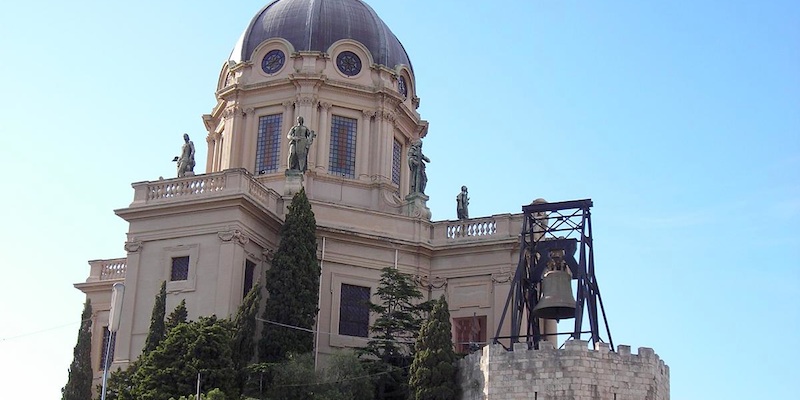The modern building, situated in Viale Principe Umberto, is an imposing octagonal building with a high dome. At its base, there are eight bronze statues made by Teofilo Raggio depicting the four cardinal virtues, the three theological virtues and lastly the virtue of religion. On the top of the entrance stairs, there is a statue of Cristo Re made by T. Calabrò. In the wall, there are about a thousand niches containing the remains of Italian soldiers killed during the First World War.
In this same area, the Castle of Matagrifone once stood, also known as Rocca Guelfonia. Its position on a hill, so near to the city centre, made it a strategic location to protect the city and the port. Polibio probably referred to it when he wrote about Mamertines, who conquered Messina, driving the Carthaginians out of the fortress. During the Norman period, the building was enlarged and became a powerful fortress. Other sources say that it was built by Richard the Lionheart, who stayed there before leaving for the third Crusade in the Holy Land (1190). He may have built the fortress in order to resist the “Greeks” of Messina, who looked unfavorably on his presence in the city (it is for this reason that the castle was known by the name Matagriffones – kill the Greeks). It seems that Richard the Lionheart ordered an aberrant massacre here in Messina, while the then king of Sicily Tancred looked on. During the Sicilian Vespers, the French took shelter in the interior of its walls and later left uninjured.
In the first half of the 15th century, during the reign of Ferdinand II of Aragon, major construction was started to enlarge the castle, which became the royal residence. In the 16th century, during the reign of Charles V, with the fortification of the whole city, the structure was reinforced, after the damages caused by the explosion of the munitions depot in 1516 by lightning. During the years of the anti-Spanish Revolution (1674-78), it was held by the citizens who attempted an unsuccessful resistance. Serious damages were caused by massive bombings from1718-20, and by guns thundered against Messina in 1848 from the Forte San Salvatore and the Cittadella, occupied by the Bourbons. In 1838 it was turned into a prison.
The earthquake of 1908 destroyed the majority of the old building. Despite a decree of the Ministry of Education, which protected the ruins of the Rocca in 1925; in 1937 the area was totally destroyed in order to build the present church of Cristo Re, designed by the engineer F. Barbaro and the inspiration credited to G. A. Montorsoli.
Are you a local? What do you think about Shrine of Christ the King?
Login to suggest it!


